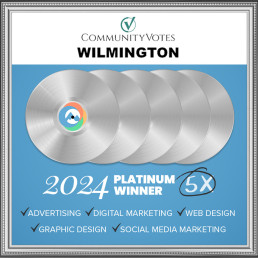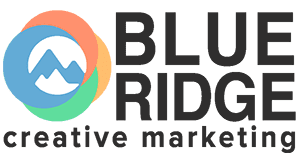Branding is About More Than Just a Brand Logo
Branding Is More Than Just a Brand Logo: Here’s Why It Matters
When people think of branding, the first thing that often comes to mind is a company’s logo. While a brand logo is undoubtedly a crucial part of any brand’s identity, it’s just the tip of the iceberg. Branding goes far beyond the visual mark that represents your business; it’s about the emotions, experiences, and perceptions that your audience associates with your company.
In this blog post, we’ll explore why branding is much more than a logo and how building a comprehensive brand strategy can set your business apart.
1. Branding Is About Your Identity
At its core, branding is about who you are as a business. It encompasses your mission, values, voice, and the promise you make to your customers. A strong brand communicates what your company stands for and creates a sense of trust and loyalty among your audience.
For instance, companies like Apple and Patagonia are more than their logos. Apple is synonymous with innovation and sleek design, while Patagonia is a champion of environmental responsibility. These qualities are baked into every aspect of their operations, from product design to customer service.
2. It Shapes Customer Perception
Your brand is how people perceive your business, and this perception is influenced by every interaction a customer has with you. This includes your website, social media presence, customer service, and even the way you package your products.
Take Starbucks, for example. Beyond its iconic green mermaid logo, Starbucks’ branding is reflected in the warm ambiance of its stores, the personalization of drinks, and its commitment to sourcing ethically. This consistent experience helps Starbucks maintain a loyal customer base.
3. Consistency Is Key
A cohesive brand ensures that all touchpoints—from your website to your email campaigns—deliver the same message. Consistency builds recognition, which in turn fosters trust.
Imagine a company that uses a playful tone on social media but adopts a serious, formal approach in its email communications. This inconsistency can confuse customers and dilute the brand’s impact.
4. Emotions Drive Brand Loyalty
People connect with brands on an emotional level. Great branding evokes feelings, whether it’s the excitement of unboxing a new gadget or the reassurance of using a trusted product. These emotions are what turn first-time buyers into loyal customers and advocates.
Consider Nike’s “Just Do It” slogan. It’s not just about selling shoes; it’s about inspiring people to push their limits and achieve their goals. This emotional resonance is a hallmark of effective branding.
5. Your Employees Are Part of Your Brand
Branding isn’t just outward-facing; it also involves how your employees perceive and embody your company’s values. Employees who align with your brand’s mission can be powerful ambassadors, enhancing customer experiences and reinforcing your brand’s authenticity.
Companies like Zappos emphasize their internal culture as much as their customer interactions. Their commitment to employee happiness and exceptional service is a cornerstone of their brand identity.
6. The Power of Storytelling
A compelling brand tells a story that resonates with its audience. Stories humanize your brand, making it relatable and memorable.
For example, TOMS Shoes is not just a footwear company. Its “One for One” initiative, which donates a pair of shoes for every pair purchased, tells a story of giving back and making a difference. This narrative is deeply embedded in its branding and has been instrumental in its success.
Final Thoughts
Your brand logo is an important visual representation of your brand, but it’s far from the whole story. Effective branding requires a strategic approach that aligns your visual identity, messaging, and customer experience with your core values and mission.
Investing in your brand beyond the logo can lead to stronger customer relationships, higher brand loyalty, and long-term business success. So, the next time you think about branding, remember: it’s not just about what people see; it’s about how you make them feel. With Blue Ridge’s expert services in brand strategy and brand design in Wilmington, we can help brand your business and get it shining like never before. Contact us today to get started!
What Is Branding in Marketing?
In today’s crowded marketplace, standing out isn’t just about having a great product or service—it’s about branding in marketing: creating a brand that resonates, remains recognizable, and builds trust. At Blue Ridge Creative Marketing, we specialize in crafting cohesive brand strategies that do just that.
But what is branding in marketing? Let’s break it down.
The Foundation of Brand Strategy
At its core, a brand strategy is a long-term plan designed to develop and maintain your brand’s identity, perception, and presence in the market. It’s not just about a logo or catchy tagline—it’s about the emotions, trust, and loyalty your brand inspires.
A successful brand strategy includes these essential elements:
1. Brand Purpose
Why does your brand exist beyond making a profit? Your purpose defines the mission and values that resonate with your audience on a deeper level.
2. Target Audience
Knowing your audience inside and out ensures your messaging and visuals connect. Who are you speaking to, and how can you address their needs?
3. Visual Identity
From your logo to your color palette and typography, your visual identity is your brand’s face. It needs to be consistent and memorable across all touchpoints.
4. Voice and Messaging
A brand’s tone and language build its personality. Whether you’re professional, fun, or bold, consistency is key to ensuring your audience knows what to expect.
5. Differentiators
What makes your brand unique? Highlighting your strengths and standing apart from competitors is crucial to building recognition.
Where Branding in Marketing Matters
Branding in marketing is more than just a logo or design elements—it’s about creating a perception that sticks with your audience. From the moment a potential customer sees your logo or hears your brand name, they should feel something positive and familiar. That’s why branding matters in every step of your marketing, especially when it comes to the following materials:
- Website Design: Your website is often the first place customers interact with your brand online. Ensure consistency across every page, from your logo placement and color scheme to your fonts and imagery.
- Social Media Posts: Whether on Instagram, Facebook, LinkedIn, or TikTok, your social media posts should consistently reflect your brand’s voice and visual style. This helps followers recognize your brand at a glance.
- Email Newsletters: Consistent branding in your email campaigns ensures your messages are instantly recognizable in your subscribers’ inboxes. From the subject line to the design and tone, every element should reinforce your brand.
- Advertising Materials: Whether it’s digital ads, flyers, or billboards, your advertising materials need to align with your brand identity. A mismatched ad can confuse potential customers and detract from the message you’re trying to deliver.
- Packaging: For physical products, packaging is a crucial brand touchpoint. Your packaging should clearly reflect your brand’s identity, from colors and fonts to logos, helping customers recognize your product on the shelf.
- Business Cards & Stationery: When interacting with clients or customers face-to-face, your business cards, letterheads, and other stationery materials should all carry the same visual branding to reinforce your brand’s presence.
- Customer Support Materials: Emails, help guides, and even FAQs should reflect your brand’s voice. This helps maintain consistency across every customer touchpoint, whether they’re resolving an issue or getting more information about your services.
- Event Materials: For any in-person or virtual events, from trade shows to webinars, your event materials—like banners, presentations, and promo items—need to be branded consistently to leave a lasting impression.
Why Brand Strategy Matters
Without a solid brand strategy, your marketing efforts can feel scattered and ineffective. Imagine seeing inconsistent logos, mismatched colors, or conflicting messages from a single company—it undermines trust and confuses customers.
A well-executed brand strategy ensures that every ad, social media post, email, and campaign reflects the same identity, reinforcing your brand and making it recognizable. Over time, this builds trust, loyalty, and a strong emotional connection with your audience.
How Blue Ridge Creative Marketing Helps
Our team of branding experts knows the value of consistency. We work with you to:
- Develop a cohesive visual identity that looks great across all platforms.
- Craft messaging that aligns with your brand’s purpose and connects with your audience.
- Build a strategy that turns your name into a recognizable and trusted household brand.
We’ve seen firsthand how consistency transforms businesses. With a thoughtful brand strategy, your marketing becomes more effective, your audience becomes more engaged, and your growth becomes unstoppable.
Ready to Build a Stronger Brand?
At Blue Ridge Creative Marketing, we don’t just create brands—we build legacies. Let’s work together to develop a strategy that ensures your name shines in the marketplace, stays top-of-mind, and creates trust with every interaction.
Contact us today to start building your brand strategy!
The Retro Branding Strategy - What's it All About?
With all the trends going around in marketing/advertising, the retro branding strategy has become increasingly popular. It not only creates a sense of nostalgia that resonates with consumers on an emotional level but it reminds us of a company’s value over a long period of time.
So, what is it about this retro branding strategy trend that makes it so influential in today’s marketing landscape? How does it influence the way a brand is viewed or perceived, and most importantly, how does it influence consumers’ purchasing decisions?

What exactly is a ‘retro branding strategy’?
Retro branding is when companies bring back old styles and designs to make people feel nostalgic. This can include using marketing and advertising tools like old logos, old packaging, and even vintage style ads. By using ‘blasts from the past’, brands hope to make people remember good times from their younger years and feel a deeper, more authentic connection with their brand.
The psychology and appeal behind nostalgia
According to many psychologists, nostalgia serves as a coping mechanism, which allows folks to seek solace and comfort in fond memories during times of stress or uncertainty in their lives (something we all need post-pandemic!). With the current economy, this make more sense as to why many brands are looking to hop on the retro trend as a strategy.
When consumers encounter forms of retro branding, it triggers nostalgic emotions associated with simpler times, childhood memories, or well-received cultural moments from the past. In turn, this emotional response creates a sense of familiarity and warmth on a subconscious level, making retro-inspired brand designs and campaigns deeply appealing to consumers.
Putting retro branding strategies into practice
You notice other big brands reverting back to past looks and feels, so why not give it a shot if you’re due for a brand refresh? However, this retro strategy comes with a lot of preparation to make it a success. Below are some tips to get started:
Researching Target Audience’s Nostalgic Preferences:
- Conduct research into the target audience’s demographic data and cultural background.
- Analyze past trends, icons, and cultural moments that resonate with the target audience.
- Utilize surveys and focus groups to gather insights into specific nostalgic preferences.
- Identify key elements from the past that evoke strong feelings of nostalgia among the target audience.
Incorporating Retro Elements into Branding:
- Redesign logos, packaging, and marketing materials to reflect vintage aesthetics.
- Integrate retro-inspired imagery, fonts, and colors into branding elements.
- Create advertising campaigns that evoke the spirit of a past era.
- Use storytelling to highlight the brand’s heritage and connection to the past.
Balancing the Old with the New:
- Maintain authenticity while incorporating retro elements into branding.
- Find creative ways to modernize retro aesthetics and make them relevant to contemporary consumers.
- Experiment with blending vintage styles with modern design trends.
- Continuously monitor consumer feedback and adjust branding strategies accordingly to ensure they resonate with the target audience.
Getting started with retro branding
In today’s brand landscape, retro branding is a big deal because it taps into our love for the past on an emotional level. Brands are using old-fashioned styles to make us feel connected and nostalgic, standing out amongst the noise and making us feel like we’re part of something special. By mixing old looks with new ideas, the retro branding strategy trend helps brands create strong emotions, and continue to grow – even in our fast-changing modern digital world.
Want assistance with your retro branding? Our brand strategist can help. Contact aaron@weareblueridge.com.
BRCM Wins 5x for Award Winning Creative Services
Recently, Blue Ridge Creative Marketing was recognized 5x for award winning creative services in the CommunityVotes 2024 Wilmington. We took home platinum awards in FIVE separate categories (Advertising, Digital Marketing, Web Design, Graphic Design, & Social Media Marketing), as part of the Business Services category. BRCM is stoked and honored to have been nominated by Wilmington community members for our unique offering of creative services. We’re grateful to our clients, to the community of Wilmington, NC, and to CommunityVotes for celebrating our dedication to excellence and our award winning creative services.

What is a CommunityVotes award?
Since 2014, CommunityVotes has operated its Community Voting awards platform and serves many communities across the country, including Wilmington, NC. The goals of this impartial and grass roots organization include honoring businesses and other professionals for their work, along with providing area residents with insight into trusted service providers in their community.
On the CommunityVotes platform, community members are responsible for nominating and voting. First, businesses are nominated, and the total number of nominations determines which nominees move on to the Voting Round. In this next round, community members must sign in using their email and can only cast one vote for each available sub-category within the designated main categories. These votes determine the Platinum, Gold, Silver, and Bronze winners in addition to any honorary recognitions.
These Platinum Awards recognize our award winning creative services and commitment to our clients
Driven by everyday people who want to recognize the skills and talents of area professionals, the CommunityVotes platform is like the People’s Choice awards for local businesses and service providers. Thank you to our clients who have enjoyed our work and dedication to customer service and took the time to nominate us. Thank you to the business owners in the community who may have recognized our efforts in providing excellent and unique creative services for the local community and beyond. The BRCM team is pleased to have contributed to businesses and individuals throughout the ILM community which resulted in our nomination and recognition as Platinum Winners in five distinct categories.
A disabled-owned creative agency with over 10 years in business working with a number of unique clients in a variety of industries, BRCM is proud to have received CommunityVotes 2024 Wilmington Platinum Winner awards for our Wilmington creative marketing work. We’re proud to continuing to provide advertising, digital marketing, web design, graphic design, & social media marketing services to the Wilmington area and in other communities throughout the Southeast and we look forward to working with you and providing you with our platinum-level creative services!
Wacky Brand Extensions Fueled by Millennials & Social Media
Thanks to social media, the rapidness in which we (Millennials in particular) consume content, and the sheer amount of content being thrown at us every single day has created an era in which brands crafting a well thought-out and carefully crafted message in the form of an advertising campaign or TV spot is just not enough for most… in other words, you need something extra to help you break through the clutter and cut through the noise if you want to be seen as “cool” – enter: brand extensions - and it’s starting to get weirder and weirder (or, more innovative, depending on how you look at it).
Product and brand extensions are not a new thing, but, they are becoming more commonplace and off-the-wall than ever before. Millennials and their love for social media helped fuel this “brand extension” arms race and get us where we are right now.
Just within the past month, we’ve seen KFC teaming with Crocs for a special edition, chicken bucket sandal (fried-chicken scented, of course), branded McDonalds Quarter Pounder ingredient candle sets, and, just in time for Valentines Day, Pepsi unveiled a Crystal Pepsi branded engagement ring (could you imagine being proposed to with one of these, ladies??).

Not joking here. Crystal Pepsi was boiled down to its most basic carbon form, ground into a powder, then added in to the process of making a 1.53-carat, lab-grown diamond. This “stunt” was luckily just a stunt, though, as part of a larger social media based contest in which a winner will be announced via social media, (naturally) just in time for “National Proposal Day” on March 20th.
Additionally, Oreo has decided to team up with streetwear brand Supreme (something it seems like every brand and their mother wants to do right now) for a special edition Supreme Oreo that features the brand’s signature red/white color combo, complete with the Supreme logo right where the Oreo logo would be. It looks tasty. But, no one will be eating these…
And, for brands, it’s working! Which keeps them on their toes thinking of the next crazy thing that might help them cut through the clutter. Just to help illustrate just how popular and crazy the demand is for some of this stuff, a 3-pack of these Supreme Oreo cookies RMSPd for $8, but, you can’t buy them through retail and longer. they sold out, of course! If you really want some though, place your bid: there have been bids as high as nearly $90,000 on eBay!
 It’s all part of our current culture in which brands’ broader want/need to be included in the pop-culture conversation – part of a continuous cycle that’s been going forever (in some form or another) – has been accelerated by Millennials’ tastes and the popularity of social media and free press as a marketing tool.
It’s all part of our current culture in which brands’ broader want/need to be included in the pop-culture conversation – part of a continuous cycle that’s been going forever (in some form or another) – has been accelerated by Millennials’ tastes and the popularity of social media and free press as a marketing tool.
Here’s a rough outline of how the cycle works for brand extensions:
First, a brand makes something “extra” or does some kind of cool stunt to help stand out and set itself apart (to cut through the noise) in order to try to be included in the broader pop-culture conversation. If the people “approve”, it’s able to join the “cool kids club” and ride the wave of free press and internet stardom while it lasts. If it fails, it risks becoming seen as a laughing stock. It can backfire, and the brand is seen as not with the times, or irrelevant (very “un-cool”, man).
Of course, this world of wackiness is just the current iteration of the whole process. Sometime in the future, novelty fatigue will be upon us, and sooner or later, we’ll be seeing these types of brand extensions and promotional products appearing at yard sales and collectible stores galore. Just like we’ve seen in the past with things like branded t-shirts and mugs.
What’s next, no-one quite knows yet. But, one thing is for sure: it’s getting crazier and crazier (or, more and more innovative, if you look at it that way), and millennials and social media are helping to keep the arms race going at a faster pace than ever before.
Digital & Data Stifling Creative Quality in Advertising
Creative quality advertising is crucial, but the continual rise of data-driven marketing is beginning to hurt the “specialness” of traditional creative advertising as we know it.
The ability for brands and companies to see immediate, measurable results through increasingly specific data points, while good for looking at short-term results, is dragging down the quality of content being produced by some of the largest ad agencies in the world – leading to large corporations creating in-house creative departments or bringing in brand consultancies more and more. This overuse of research testing and relying on data over creativity, results in basically asking the consumers to be creative. This is not only a certain road to “genericization” of communication. It’s also just lazy thinking.
A majority of marketers now claim this continual digital growth is having an overall negative impact on creative quality of ads. In fact, a recent study by Sizmek, which surveyed more than 500 brand marketers across the US and Europe, shows that the ad industry is still largely struggling to nail down the marriage of digital advertising and powerful, thoughtful creative work. In other words, the relationship between creative and digital is being rocked by an intense industry focus on data, A.I. and privacy practices. While these things are all certainly important, the level of focus on them is becoming increasingly detrimental to creativity and originality, which is good for no one and leads to advertising messages being short-lived, disposable throw-aways, meant to capture someone’s attention for a moment and then disappear into the abyss forever.

Marketers seem to agree. Nearly 70% of marketers surveyed in the study believe that “digital growth in advertising has come at the expense of the quality of creative.” While nearly 84% say A.I. means nothing without the creative to support it. Creative innovation has always been at the heart of forging relationships with customers through branding and advertising. The explosive growth of digital marketing and data-driven digital targeting has opened new doors to personalization and reach (which is a great thing!), but marketers acknowledge that creative has not always kept pace (not so good). This, in turn, hurts brand loyalty, which is what brand owners truly hope for. Regardless of digitization, screen size, or ad format, a great advertising campaign can be a key driver for establishing and maintaining brand loyalty. But these are becoming harder and harder to come by these days.
The current focus by companies and large agencies on short-term, instantly measurable, disposable viewership is an unfortunate byproduct of the digital age we’re currently living in. Sustainable advertising campaigns designed to create and reinforce brand loyalty will be a thing of the past if we don’t start paying more attention to creative quality and storytelling like the great ad campaigns of yesteryear. Let’s get back to developing creative, compelling, and interesting content and campaigns that catch viewers attentions, spark their imaginations, and help increase brand loyalty for large and small brand alike.







